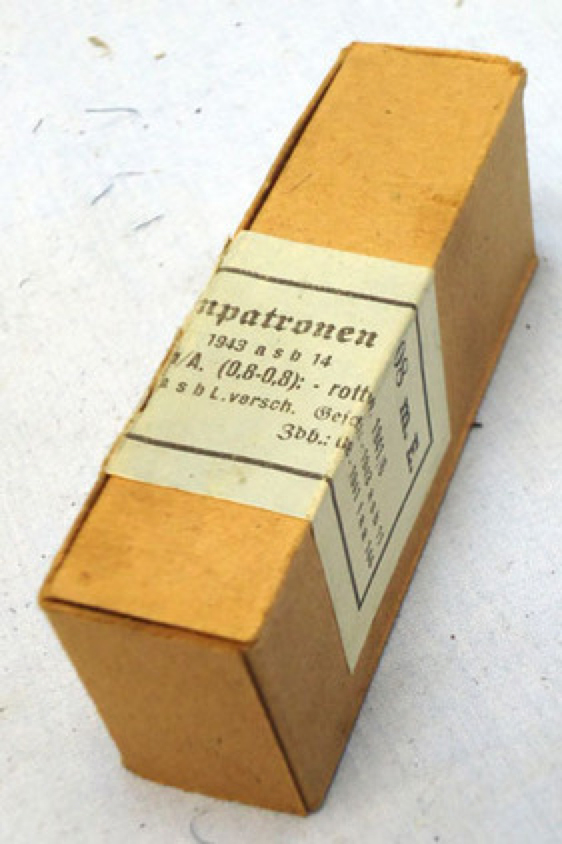Unfortunately for Luger, the 9×19-chambered pistols he sent to the 1907 U.S. field trials did not impress the reviewers enough to be selected, although neither did the ones chambered in .45 ACP. It was not so much an issue of caliber as pistol design that kept the Luger, and thus the 9×19, out of U.S. inventory at that time, and almost 70 years would pass before the U.S. did adopt a general issue sidearm in that caliber. Oh, how the world would have been different if the Luger had made the fateful cut! Can anyone picture Col. Jeff Cooper posing with a Luger and bragging about the stopping power of 9×19?
Immediately on the heels of its failure in the U.S. trials, however, the Luger was standardized in German issue as the P.08, or Pistole 08, as Germany found 9×19 far more desirable than earlier, smaller-caliber, less-powerful semi-automatic pistol cartridges. With that success, both the 9×19 and the Luger were on their way, and as the world descended into war in 1914, the number of Lugers in circulation jumped into the millions. Pistols and other small, handy weapons with a high volume of fire became very popular, especially in the trenches of the Western Front. Ernst Junger’s book “Storm of Steel” contains some interesting descriptions of the quantity and quality of such weapons with which troops often festooned themselves in an attempt to provide personal security. This desire for smaller, lighter arms with higher volumes of fire influenced many countries simultaneously to develop lighter weight machine guns like the Lewis gun, the Chauchat, and the MG 08/15, as well as semi-automatic rifles or conversion kits such as the Pedersen Device. Particularly in the U.S. and Germany, it also influenced development of what would become known as the submachine gun, or Maschinenpistole. While the primary U.S. contrivance in that category, the Thompson submachine gun, did not make it into production before the end of World War I, a relatively small number of Germany’s MP 18s did, and were employed by highly trained German assault troops in the final stages of the war.
By the end of World War I, every souvenir-hungry doughboy wanted a Luger, or four, to take home. At the time, U.S. troops could bring virtually anything home from a deployment, so Lugers, G98 Mausers, MG 08s, and even now-little-known-or-seen MP 18s flooded the country. Although the Thompson in .45 ACP dominated the U.S. collective imagination during the Roaring ‘20s, overseas the 9×19 footprint was expanding in civilian, police and military use. In the ‘20s and throughout the interwar period, multinational adoption of the Luger increased, as did the prevalence of newer 9×19 handguns and submachine guns. By World War II, the 9×19 cartridge was serving in every theater of operations.
Designs such as the MP 38, MP 40, and Walther P38 would earn respect on battlefields from Tobruk to Stalingrad in service with the Wehrmacht, even as the Luger continued in German service throughout the war, and was among the most desirable of war trophies. Meanwhile, Britain cranked out a handy, inexpensive submachine gun in 9×19 called the STEN, which equipped British troops effectively and far more economically than did the Thompson. Thus the 9×19, in its increasing number of variations, was put to the service of both Allied and Axis troops during World War II. Even the U.S. fielded some now-quite-obscure 9×19-chambered firearms during the period, albeit in limited numbers, and at best for use by guards at stateside prisoner-of-war camps.
While the Walther P38 is certainly also a candidate for this distinction, arguably the most influential 9×19 handgun design of the WWII era was a conception of the most iconic U.S. gun designer of all time: John Browning. While Browning didn’t live to see it selected for military service, his Hi-Power was the product of his zeal to develop a fundamentally better handgun. Anecdotally at least, in the Hi-Power Browning “fixed all the problems with the 1911.” What set the Hi-Power apart was its rugged, reliable design, and that each magazine carried 13 rounds — almost twice the capacity of other sidearms in service at the time.
Leading up to, and especially during World War II, the 9×19 was extensively developed, and special-purpose rounds like tracers, submachine gun loads and subsonic loads became commonplace. Perhaps the most interesting special-purpose 9×19 cartridge of the period was a super-hot blank designed for use with a variant of the German Flammenwerfer 41 flamethrower. By all accounts, World War II brought to light the full potential of the 9×19 cartridge, and with its flexibility and effectiveness no longer a secret, the post-war world only accelerated its rise to fame.
